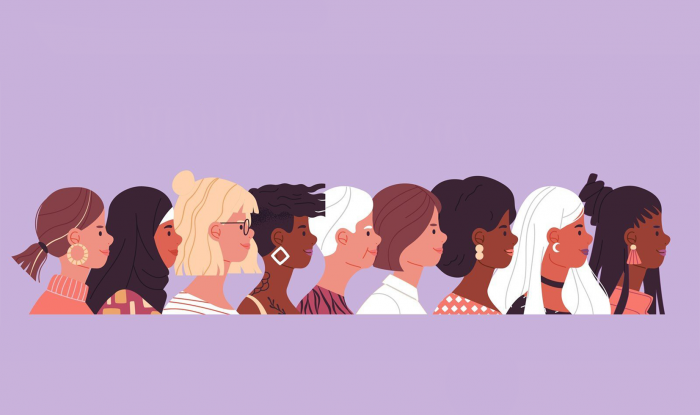International Women’s Week launches today

A less than auspicious International Women’s Day?
This year’s International Women’s Day might feel somewhat inauspicious, not simply because of world events, but also on foot of the apparent lack of progress in the UK on narrowing the gender pay gap. The latest official figures show that the gender pay gap actually widened in 2021, from 14.9% to 15.4% for all employees, though the ONS recommends looking at the longer-term trend. This is mainly because the pandemic affected data collection in 2020 and thus any comparisons with 2020, such as the figures above, need to be made with a certain amount of caution.
The long-term trend shows a gradual reduction but it’s also important to note that the ONS’ headline measure of the gender pay gap is based on median rather than average or ‘mean’ earnings. This is slightly perverse since the former, as the central or typical value, is less influenced by very high or very low values than the latter. But it is precisely these elements of the distribution, encapsulated in the extremely large bonuses paid to City high-fliers – mostly men, and the very low pay on offer to roles that make up the ‘five C’s’ of caring, cashiering, catering, cleaning and clerical work – mostly performed by women, that are a key influence on the gender pay gap, and would be better captured by a mean rather than a median approach.
Further to this, the ONS figures are based on its Annual Survey of Hours and Earnings, which takes place each April and as such misses the main bonus season. Therefore the official measure is likely to underestimate the ‘true’ gender pay gap.
The slow advance in closing the gender pay gap partly underlies recent efforts to amend the regulations on equal pay and pay gap reporting. A Private Members’ Bill by former trade union official Margaret Prosser, now in the House of Lords, is currently awaiting a date for its second reading. Centrally, it calls for the establishment of a legal right to information on the pay of a comparator man or group of men for any woman taking an equal pay claim. The lack of this legal right currently makes it very difficult, in practice, for equal pay cases to be brought.
The Bill also aims at extending the legislation on gender pay gap reporting to cover firms with between 100 and 250 employees; publication of actual mean and median hourly pay, rather than just the percentage differences; and a requirement for employers to publish action plans setting out how they intend to reduce their gaps. As a Private Members’ Bill, the odds of it passing are perhaps not great, but if it reaches the debating stage in the House of Commons it will at least provide a chance to air the issues involved.
Finally, in another parliamentary development, the cross-party Women and Equalities Committee has called on the Government to introduce regulations that would require large companies to publish data on their ethnicity pay gaps. As above, the likelihood of this happening may also not be high, but the move illustrates the extent of bipartisan support for such a measure and serves to keep the issue on the legislative agenda.